041817_YKBP_A8.pdf






8 Broadcaster Press
April 18, 2017 www.broadcasteronline.com
Two More State Properties Listed On National Register Of Historic Places
PIERRE, S.D. – Two more South Dakota
properties were recently added to the National Register of Historic Places, according to the South Dakota State Historical
Society.
The listed properties are the Arlington
Masonic Temple, also known as the Arlington Community Museum, and the Dell
Rapids Warming House.
The National Register is the official
federal list of properties identified as important in American history, architecture,
archaeology, engineering and culture. The
State Historic Preservation Office of the
State Historical Society works in conjunction with the National Park Service, which
oversees the National Register program, to
list the properties.
"South Dakota's history is rich in
American Indian culture, pioneer life and
change," said Jay D. Vogt, state historic
preservation officer and director of the
State Historical Society. "Properties listed
on the National Register are important
for their role in South Dakota's culture,
heritage and history. And when properties get listed, it shows that their owners
take pride in their role in preserving that
culture, heritage and history."
Buildings, sites, structures and objects
at least 50 years old possessing historical
significance may qualify for the National
Register, according to Vogt. Properties
must also maintain their historic location,
design, materials and association. Listing
on the National Register does not place
any limitations on private property owners
by the federal government.
This ad
is about six
days long
It will stay around for days,
weeks...and sometimes
longer. It will be read and
reread, passed from one
reader to anther; to every
member of the family, to
friends and colleagues.
Its information will be
considered, absorbed and
acted upon in the reader’s
own uninterrupted time.
The printed advertisement
puts your offer in writing.
201 W Cherry • Vermillion
605.624.4429
The Arlington Masonic Temple was
built at 222 S. Main St. in 1907-08. It is listed
in the National Register as significant for
its architecture. The wood construction,
coupled with the eclectic design, makes
the Masonic Temple a rare South Dakota
resource.
The temple is also listed for its local
significance in the area of social history.
The building is an important reminder
of the prominent role fraternal organizations played in encouraging social order,
promoting moral character, participating
in charitable endeavors and engaging in
gender-exclusive socialization throughout
South Dakota’s history.
The Dell Rapids Warming House was
built around 1930 using local rose-colored
quartzite. It is located next to the river at
the end of State Ave. The warming house is
listed in the National Register as significant for its association with the historical
themes of entertainment and recreation
in the early 20th century. At the time, ice
skating was a popular national pastime and
an integral part of life in Dell Rapids during
the winter months.
For more information on the National
Register or other historic preservation
programs, contact the State Historic
Preservation Office at the Cultural Heritage Center, 900 Governors Drive, Pierre,
SD 57501-2217; telephone (605) 773-3458 or
website history.sd.gov/Preservation (click
on National Register of Historic Places in
the right column).
Weekly Column: Battling the Beetle
By Rep. Kristi Noem
As the temperature ticks upward and
the last day of school inches closer, many
are starting to think about their summer
vacation plans. While schedules only seem
to get busier, our family still tries to make it
out to the Black Hills many times throughout the year, although we especially love
those summer months and their longer
days. There’s just nothing like the hiking,
the serenity, and – of course – the faces that
a person finds in the Hills. Over the years,
however, we’ve seen the landscape change.
Year after year, our family pictures show a
slowly dying forest.
For more than two decades, the Mountain Pine Beetle has devastated much of
the Black Hills and turned portions of this
once-heathy forest into a tinder box. In
total, more than 30 percent of the 1.2 million
acre forest was impacted to some degree by
the beetles, increasing the area’s potential
for a dangerous wildfire and jeopardizing
the tourism and forestry industries that our
state relies on.
This April, however, the U.S. Forest Service announced the beetle had finally been
beat. While work remains to repair the
damage and make the forest more resilient
against future outbreaks, getting to this
point is a long-sought success.
The epidemic had been ongoing for
around a decade before I was elected to represent South Dakota. When I brought U.S.
Forest Service Chief Tom Tidwell to view
the damage firsthand in November 2013, it
was clear we had the tools to combat the
pine beetle, but we weren’t able to apply
them on a large enough scale. Reforms on
the federal level were needed.
Months later, we saw those reforms
become law through provisions I helped
write and fought to include in the 2014
Farm Bill. As a result, we were able to cut
through environmental red tape, get boots
on the ground faster, and allow the Forest
Service to work on the scale this epidemic
required. Around one million acres of the
Black Hills National Forest benefited from
the provisions.
Additionally, I fought to make sure we
prioritized the funding needed to help beat
the beetle. The financial support promised
a trifecta of benefits. Of course, it helped us
care for one of South Dakota’s most beautiful resources, but it also served to protect
our state’s thriving tourism industry.
According to a recent report from South
Dakota Game, Fish and Parks, outdoor
recreationists support more than 18,000
jobs, add $85.5 million to state and local
bank accounts through taxes, and offer $534
million worth of income to South Dakotans.
The Black Hills is a critical piece of that
industry. Maybe most importantly, however,
I fought for support as a matter of public
safety. Simply put, an unhealthy forest carries the potential for a deadly wildfire.
We are fortunate to have so many dedicated foresters working in the Black Hills
throughout this time and I’m proud to have
been able to score some victories in support of their efforts. Nonetheless, while the
Forest Service has ruled the epidemic over,
years of damage left behind thousands of
acres of dead and dying trees. There’s work
to do, but I’m committed to turning the
Black Hills green again.
I count the Hills among South Dakota’s
many treasures, which means keeping the
forest healthy is a top priority. So, check
out the progress this summer. Plan a visit –
maybe we’ll see you out there.
Don’t Be A Stranger
By Sen. John Thune
South Dakotans are well aware of the
uniqueness that each season of the year
brings to the state. From spring’s planting
season to fall’s hunting season and everything else in between, there’s always something to do or see. South Dakotans who
travel to our nation’s capital in the spring or
summer, or any of time year for that matter,
will discover similarly unique experiences.
You won’t find any corn fields to plow or
ringneck’s to flush, but there are plenty of
historical sights to see that rival (but clearly
won’t ever exceed) South Dakota’s own
Mount Rushmore.
I particularly like spring and summer because I get to enjoy the best of both worlds.
I spend nearly every weekend back in South
Dakota attending local community events
and getting important feedback on my work
in Washington. And because there are so
many annual conferences, conventions, and
school groups that travel to Washington
this time of year, I get to see a lot of familiar
faces when I head back to D.C., too.
This spring, I’ve already had the chance
to meet with South Dakotans who represent
groups like the National Association of Federally Impacted Schools, Outstanding Farmers of America, South Dakota’s Telecommunications Association, South Dakota Sheep
Growers, the American Lung Association,
the Military Officers Association of America,
and many others. I’ve chatted with student
groups from around the state, including
Close Up students from Pierre, Hartford,
Sturgis, and Lemmon. Whether you’re in
town for a conference or a convention or
a vacation with your family, I always enjoy
when you stop by to say hello.
If you happen to be in Washington on a
Wednesday when the Senate is in session, I
host a morning coffee with Sen. Rounds and
Rep. Noem. All South Dakotans are welcome to attend. It’s become so popular that
Arizona Sen. John McCain recently stopped
by to visit with folks who were in town. If
you’re interested in attending or just looking
for more information about our Wednesday
“Sunrise Coffee,” feel free to call any of my
offices or visit my website where you can
also sign up.
My offices – throughout South Dakota
and in Washington – can be helpful if you
have questions about visiting the area
before you book your trip or after you’re already in town. We can help point you in the
right direction for places to stay or visit and
arrange tours for federal buildings like the
Capitol, Supreme Court, and Library of Congress, among others. We want to help make
your visit as fun and memorable as possible,
so don’t be a stranger. Give us a call, email,
or stop by in person. I look forward to hearing from you!



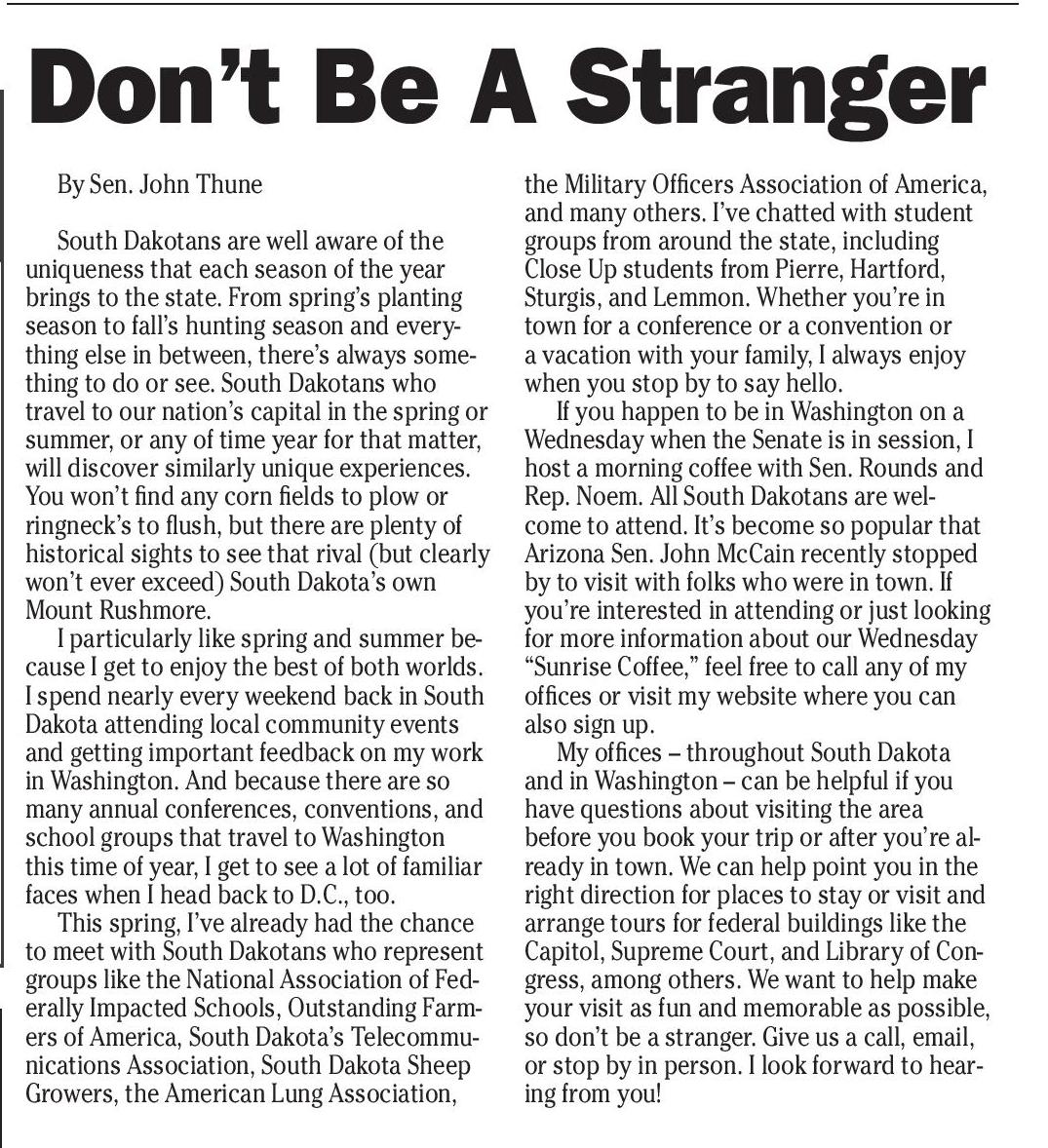
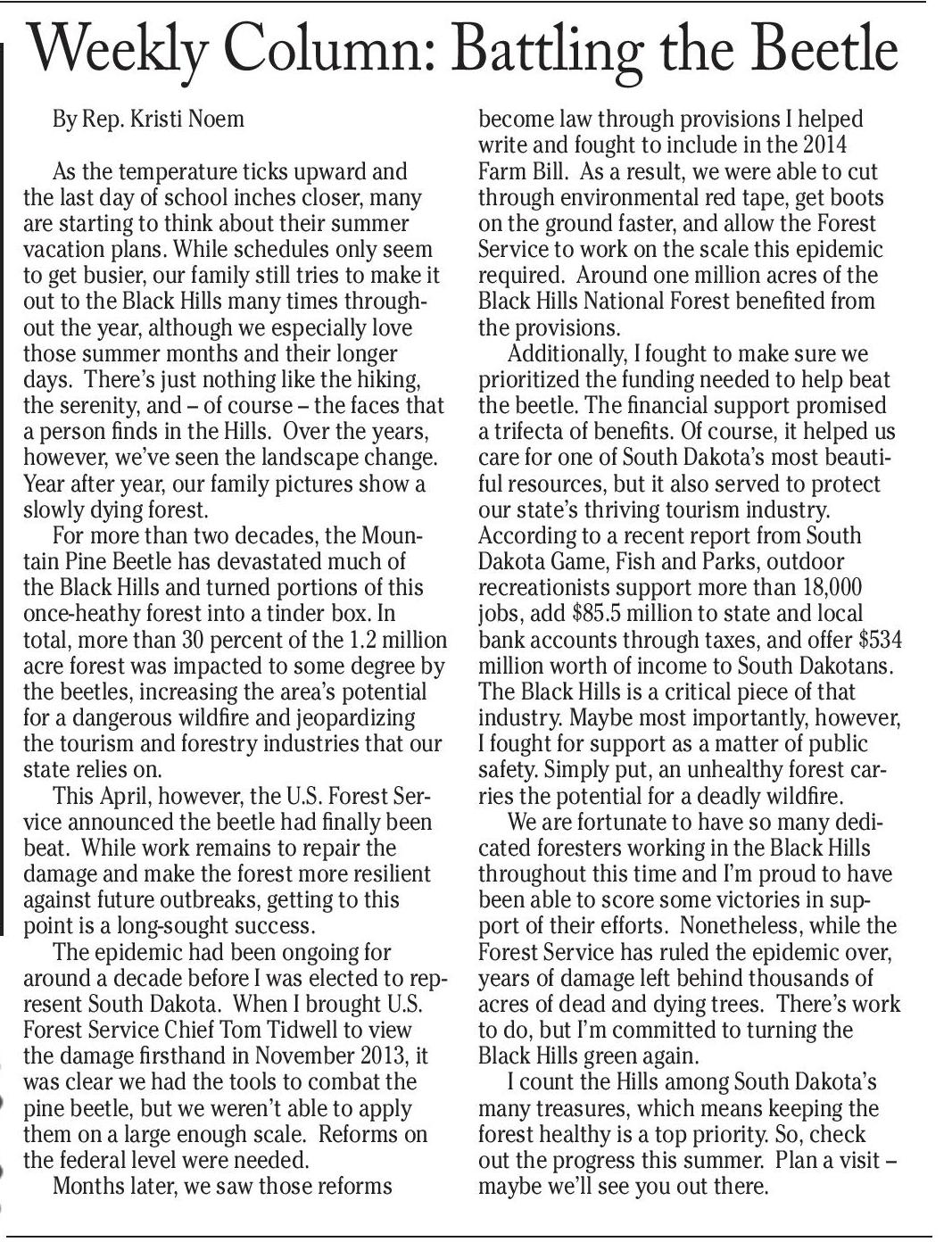
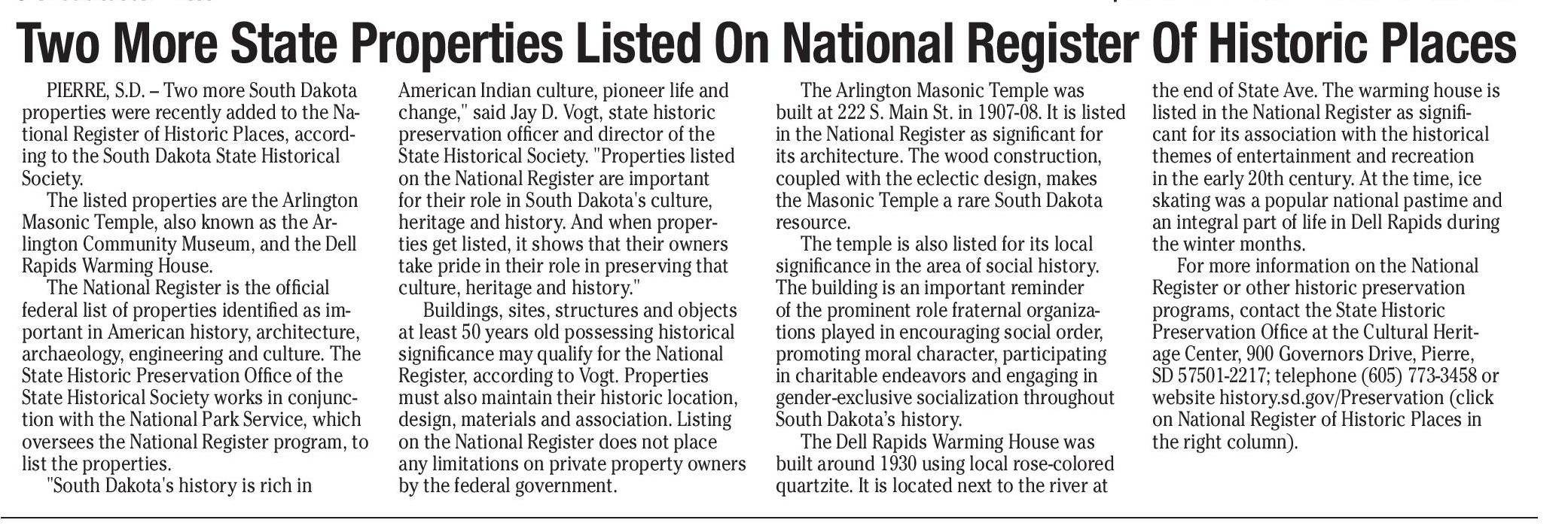





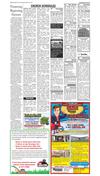




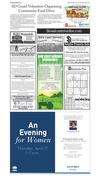
 Previous Page
Previous Page






